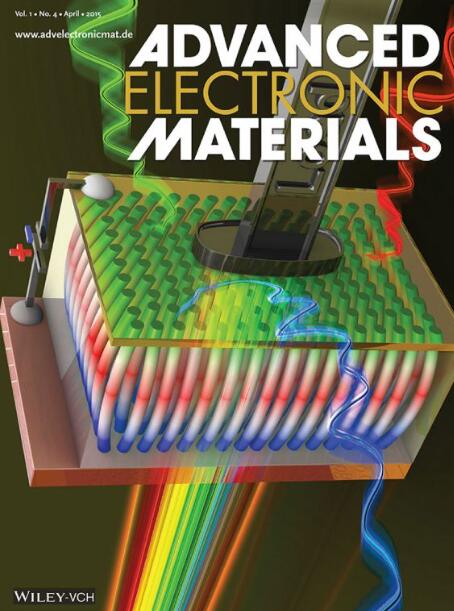纳米线器件中的量子传输
IF 5.3
2区 材料科学
Q2 MATERIALS SCIENCE, MULTIDISCIPLINARY
引用次数: 0
摘要
在SnTe纳米线器件中报道了多种量子输运实验。对这些特殊纳米线器件的研究是相关的,因为它们的拓扑特性和它们区分表面状态的潜力,因为它们的高表面体积比抑制了体积对电导的贡献。观察到低电阻和高电阻状态。高电阻器件表现出半导体和量子点的行为,这是由制造过程中的微观差异引起的,而低电阻器件在超导体-纳米线结构或Fabry - psamot振荡的混合结构中表现出部分超导性。后者表明在弹道输运通道中的量子干涉,归因于SnTe的二维表面态。各种各样的量子输运现象表明,SnTe纳米线是各种后续实验和新型器件架构的有前途的平台,包括拓扑超导性的探索和低能自旋电子器件的开发。本文章由计算机程序翻译,如有差异,请以英文原文为准。

Quantum Transport in SnTe Nanowire Devices
A variety of quantum transport experiments are reported in SnTe nanowire devices. Research on these particular nanowire devices is relevant because of their topological properties and their potential to distinguish surface states owing to their high surface‐to‐volume ratio that suppresses the bulk contribution to the conductance. A low‐resistance and a high‐resistance regime are observed. The highly resistive devices display semiconducting and quantum dot behavior caused by microscopic differences in the fabrication, while devices with low resistance show partial superconductivity when in a hybrid superconductor‐nanowire configuration or Fabry‐Pérot oscillations. The latter suggests quantum interference in a ballistic transport channel, attributed to the 2D surface states in SnTe. The wide variety of quantum transport phenomena demonstrate SnTe nanowires as a promising platform for diverse follow‐up experiments and novel device architectures, including the exploration of topological superconductivity and the development of low‐energy spintronic devices.
求助全文
通过发布文献求助,成功后即可免费获取论文全文。
去求助
来源期刊

Advanced Electronic Materials
NANOSCIENCE & NANOTECHNOLOGYMATERIALS SCIE-MATERIALS SCIENCE, MULTIDISCIPLINARY
CiteScore
11.00
自引率
3.20%
发文量
433
期刊介绍:
Advanced Electronic Materials is an interdisciplinary forum for peer-reviewed, high-quality, high-impact research in the fields of materials science, physics, and engineering of electronic and magnetic materials. It includes research on physics and physical properties of electronic and magnetic materials, spintronics, electronics, device physics and engineering, micro- and nano-electromechanical systems, and organic electronics, in addition to fundamental research.
 求助内容:
求助内容: 应助结果提醒方式:
应助结果提醒方式:


